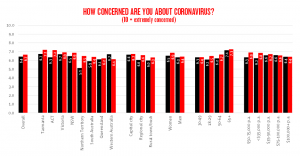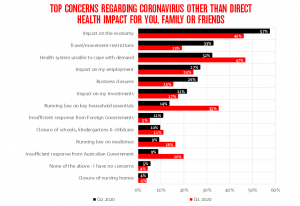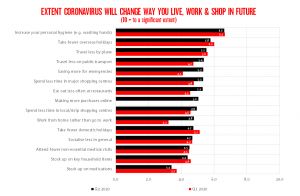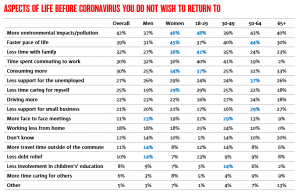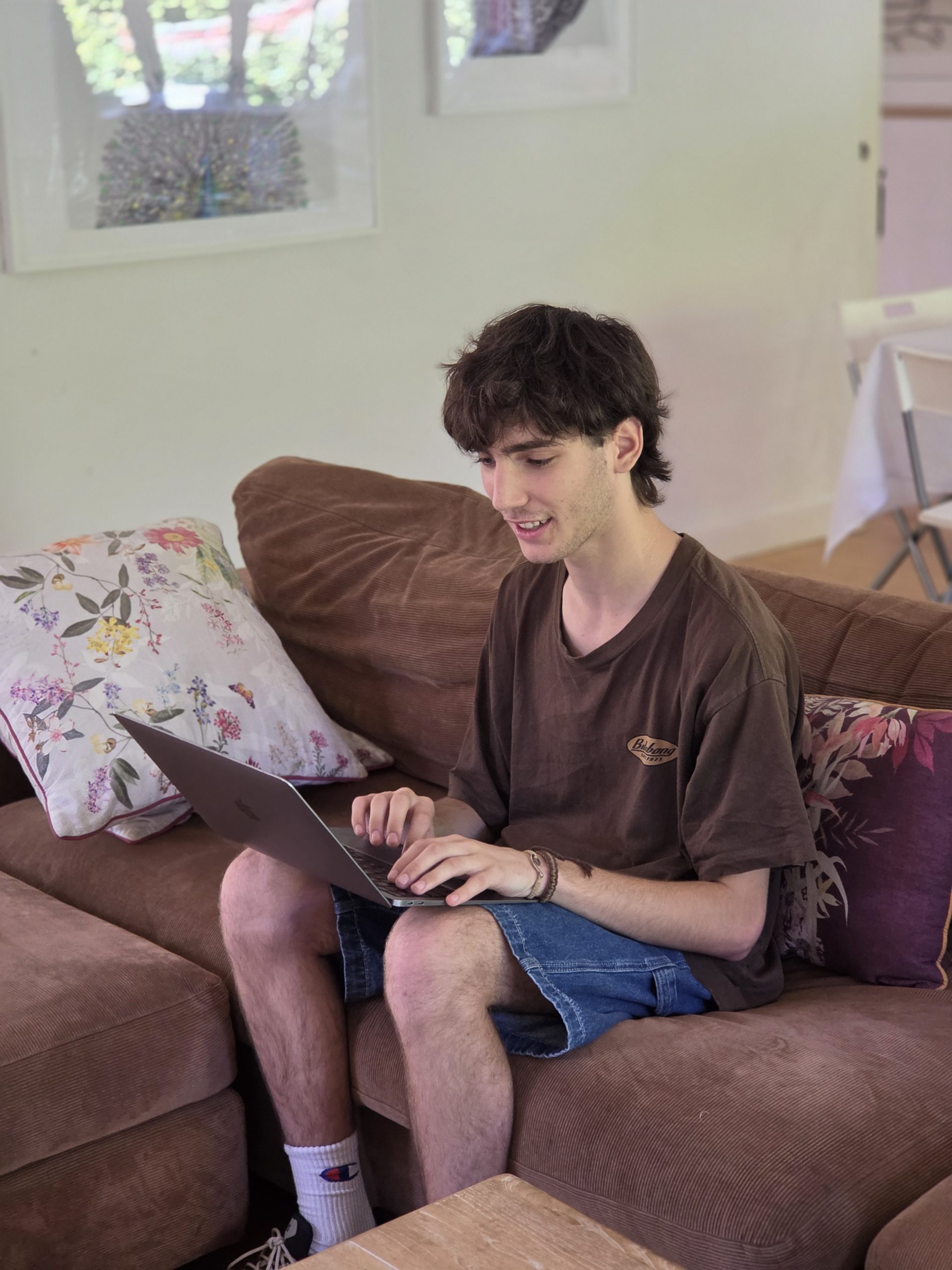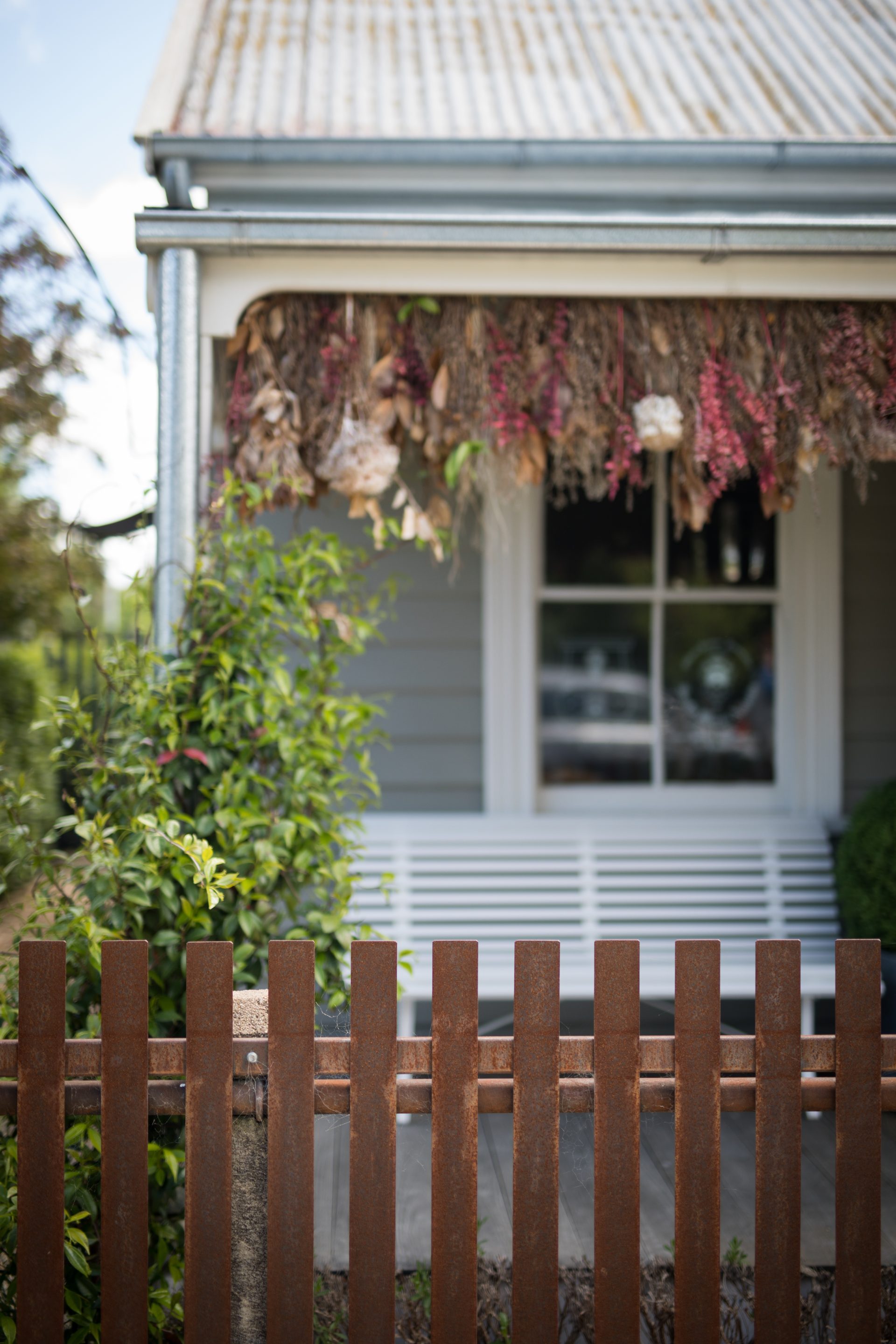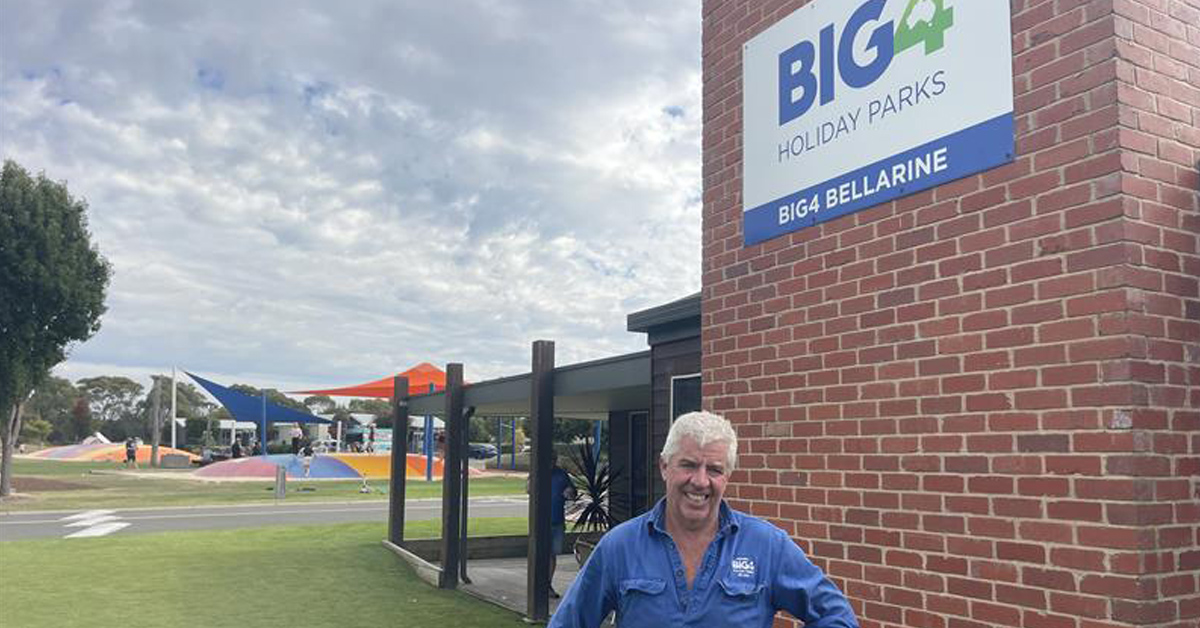In this report, NAB revisits the key concerns of Australians over COVID-19 as the impacts of the pandemic continue to unfold. Much has been written about the “new normal” beyond the virus. A more intriguing question is to what extent do we really want our pre-COVID lives back? New NAB research explores how the virus may lead to more lasting changes in our behaviours, some enforced upon us, but others through choice. While the economic and broader wellbeing impacts of the virus continue to play out, many Australians have experienced positive change and are reluctant to simply return to “normal”. But, the findings also serve as a reminder that fundamental change typically only happens incrementally.
The survey is based on responses from over 2,000 Australians and weighted to be representative of the Australian adult population by state, gender, age and other key demographics. It was conducted between May 21-29.
Despite Coronavirus restrictions beginning to be lifted across the country, Australians continue to express relatively high levels of concern over the pandemic, rating their overall level of concern at 6.7 (out of a possible 10 points) in Q2, 2020, up from 6.4 points in Q1. Concerns were higher across all states and territories, except WA (also lowest in the country). It increased most in the NT, but is highest in TAS and the ACT. After reporting similar levels of concern in the last survey, women are now noticeably more concerned about the pandemic than men. Older Australians continue to express much higher levels of concern than all other age groups.
Aside from the direct health impacts, our biggest concerns remain the effect of the virus on the economy, but this has become an even greater worry as the economy moves into recession and more jobs are impacted. Almost 6 in 10 Australians now rate this as their top concern.
There has also been a very clear shift in some other key drivers of concern. Whereas almost 1 in 2 people had previously worried about the ability of the healthcare system being able to cope, that number has fallen to 3 in 10, as isolation measures have helped cap the number of serious cases and the health system has had more time to prepare should a second wave of the virus emerge.
Following an initial surge in panic buying, the number of Australians concerned about running out of essential goods and services is also well down from March this year, along with concerns over running low on medicines. Australians have also given the government a tick on their handling of the pandemic, with fewer than 1 in 6 now identifying an insufficient response from government among their top concerns – less than half the number in the last survey.
But there are also areas that are now causing greater concern. Noticeably more Australians (around 1 in 3) rated travel/movement restrictions among their top concerns than in the March survey (around 1 in 5). Moreover, as the economic slowdown impacts more individuals, the number of Australians identifying business closures among their top concerns has also risen. In addition, double the number of Australians (around 1 in 10) are now concerned about the response to the pandemic from foreign governments (1 in 20 in March), and somewhat more by the impact on their investments.
The anxiety brought on by the rapid spread of the virus also created significant behaviour changes in the way people live, shop, and consume goods and services.
Humans are not generally disposed to radical departures from their daily routines. When confronted with a crisis like a pandemic, it’s all too easy to believe that everything will change. But, human behaviour does not change quickly. Many of the more sensationalist predictions are likely to be highly inaccurate.
One of the more commonly espoused predictions is that post-COVID 19, many of us will fundamentally re-evaluate our lives and take advantage of new opportunities to work remotely, resulting in an exodus of Australians from big cities to regional areas in search of a tree, sea, or some other lifestyle change.
Our research suggests very few are considering such a move.
When asked about the likelihood of making a lifestyle change, on average Australians scored just 1.9 points out of a possible 10. This result was broadly consistent across all key demographic groups, although the likelihood of doing so was somewhat higher in the 18-29 age group (3.6 points).
But while quantum change is unlikely, we will see adaptations and modifications to daily life, many of which may last well beyond the current crisis.
Our previous survey focussed on how people were changing their behaviours in response to the virus. Some changes were widespread and immediate – particularly those around increasing personal hygiene, taking overseas holidays and travelling by plane. This time, we asked the extent to which Australians believed the pandemic would change the way they lived, worked and shopped in the future.
Given Coronavirus transmission mechanisms, it’s no surprise improved personal hygiene (e.g. washing hands) is expected to be the most lasting change. Of concern for the tourism industry, the second most frequently cited longer-term changes were taking overseas holidays and travelling by plane.
Among other key ongoing behaviour changes, Australians plan to spend less time on public transport, in major, local and neighbourhood shopping centres and eating out at restaurants in the future. These factors were scored more highly regarding future change than they were back in March in terms of initial responses to the virus.
Australians also indicated they would save more for emergencies and make more purchases online in the future. They now are also more likely to expect to work from home rather than go to work.
When people experience positive change for the better, it can become extremely difficult to persuade them to go back to something perceived as less desirable.
When we asked Australians to the rate the extent to which they agreed with the statement “I want my life to return to exactly how it was before the COVID-19 pandemic”, they scored on average only 6.5 points out of a possible 10 (where 10 is agree completely). No demographic group, irrespective of age, income, gender or location, wanted their lives to completely return to ‘normal’.
By state, the extent of agreement ranged from 6.8 points in NSW to 5.6 points in TAS. Men (6.8 points) were somewhat keener to return to their previous lives than women (6.3 points), and older Australians aged over 65 (7.5 points) significantly more so than any other age group.
When asked to identify which aspects of their lives before the pandemic they did not wish to return to, the most commonly cited responses were “more environmental impacts/pollution”, and “the faster pace of life” – nominated by around 4 in 10 Australians as their top answers.
Finally, many Australians also fear spending less time with family, more time commuting to work and consuming more (around 3 in 10).
Australians continue to express relatively high levels of concern over the pandemic.
During our March survey, Australians rated their level of concern over the pandemic at 6.4 points out of 10 (where 10 is ‘extremely’ concerned). The level of concern today has risen to 6.7 points.
The level of concern is higher in all states and territories, except WA (also lowest in the country). It increased most in the NT (up 1.4 to 6.5 points), but is highest in TAS (7.2 points) and the ACT (7.2 points). Concern has also risen in all regions, but remains highest in capital cities (6.7 points), marginally ahead of major regional cities (6.6 points).
After reporting similar levels of concern in the last survey, women (6.9 points) are now noticeably more concerned about the pandemic than men (6.4 points), with the level of concern among men broadly unchanged from the last survey.
Older Australians (the highest risk mortality group) expressed much higher levels of concern than all other age groups (7.3 points). The 30-49-year-old age group (6.4 points) however replaced the 18-29 group (6.5 points) as the least concerned.
Interestingly, Australians earning between $35-75,000 p.a. have reported a noticeable increase in their level of concern since the previous survey.
Australians are still facing multiple threats from the Coronavirus pandemic (aside from the direct health impacts for themselves, their family and friends).
Their biggest concern – the impact of the virus on the economy – has become an even greater concern. Almost 6 in 10 Australians (57%), now rate this as their top concern, up from 47% in the previous survey.
There has also been a clear shift in some other key drivers of concern. Whereas almost 1 in 2 (47%) had previously worried about the ability of the healthcare system being able to cope, that number has fallen to 32% as forced isolation measures helped contain the number of serious cases to much lower levels than initially feared.
In addition, only 14% of Australians now rate running out of essential goods and services among their top concerns, well down from 35% previously. Noticeably fewer Australians also worried about running low on medicines (9%) than in the March survey (16%).
Australians are also more supportive of how the government has handled the pandemic, with fewer than 1 in 6 (9%) identifying an insufficient response from the Australian government among their top concerns – less than half the number in the last survey (20%).
But there are areas that are now causing greater concern. Noticeably more Australians (33%) rated travel/movement restrictions among their top concerns than in the March survey (19%).
Moreover, as the economic slowdown bites down harder on more individuals, the number of Australians identifying business closures among the top concerns also rose to 26%, from 15% in May.
Double the number of Australians (11%) are now concerned about the response to the pandemic from foreign governments (5% in March), and somewhat more by the impact on their investments (21% versus 17% in March).
In our last survey, we asked Australians how the Coronavirus had made them change their behaviours in some key areas. This time, we asked them to tell us the extent they thought the Coronavirus pandemic will change the way the live, work and shop in the future.
Given Coronavirus transmission mechanisms, it’s no surprise improved personal hygiene (e.g. washing hands) will continue to influence how Australians plan to live in the future, particularly given the potential for a second wave of infections as isolation measures are relaxed.
Of concern for the tourism industry, the second most frequently cited longer-term changes were taking overseas holidays and travelling by plane. Among other key behaviour changes, Australians plan to spend less time on public transport, in major, local and neighbourhood shopping centres and eating out at restaurants in the future than they did a few months ago.
Australians also indicated they would save more for emergencies and make more purchases online in the future.
More Australians also expect to work from home rather than go to work. This was most evident in capital cities than in regional and rural areas.
With the government trying to stop the spread of the virus by imposing strict lockdowns, there has a large increase in the number of Australians now working from home and away from the office.
As the country begins to emerge from lockdown, many more of us are expected to continue to spend a greater amount of time working from home than in the office.
With these new opportunities, we asked Australians if they were considering moving to a lifestyle property? Our research suggests very few are. On average, they scored just 1.9 points out of a possible 10 when asked if they were considering such a move (where 10 = completely).
This result was broadly consistent across all key demographic groups, although the likelihood of doing so was somewhat higher in the 18-29 age group (3.6 points).
But when Australians were also asked the rate the extent they agreed with the statement “I want my life to return to exactly how it was before the COVID-19 pandemic”, it appears very few of us want our old lives back exactly as they we were before COVID-19.
On average, they scored 6.5 points out of a possible 10 (where 10 is agree completely).
By state, the extent of agreement ranged from 6.8 points in NSW to 5.6 points in TAS. By region however, there was no difference in opinion.
Men (6.8 points) were somewhat keener to return to their previous lives than women (6.3 points), and older Australians aged over 65 (7.5 points) significantly more so than any other age group.
There was however little difference in the opinions of Australians by income level.
Coronavirus has disrupted and changed many aspects of community, social and working life in Australia – some for the better and some for the worse. But are their aspects of life we now value more than we did before the pandemic, and are there some we value less?
When asked to identify which aspects of their life before the pandemic they did not wish to return to, most Australians – around 4 in 10 – highlighted more environmental impacts/pollution (42%) and the faster pace of life (39%).
Many Australians also appear to have appreciated spending time with their families, with 32% indicating they do not want to go back to spending less time with them. Around 3 in 10 also said they do not want to go back to spending time commuting to work or consuming more.




